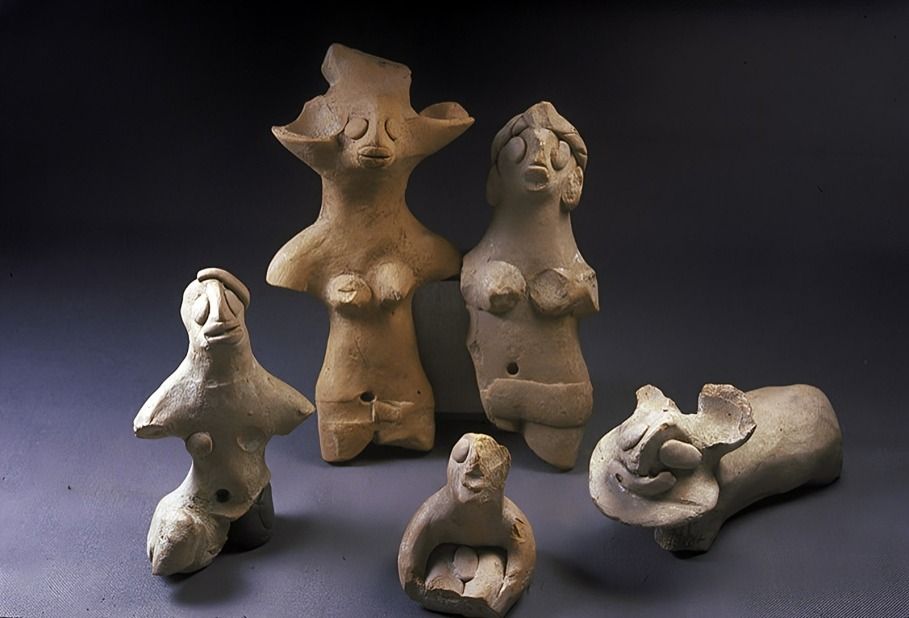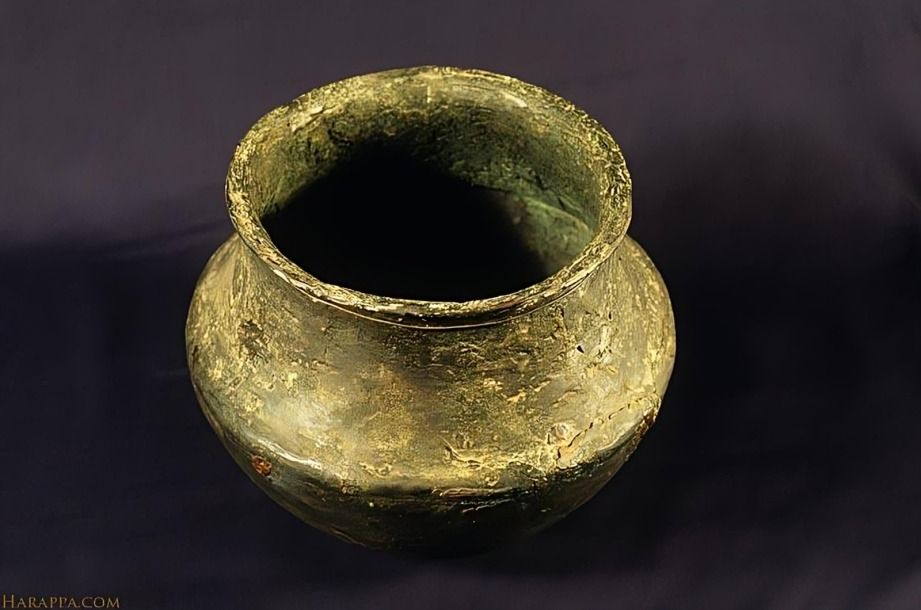
“
The Indus Valley civilization, one of the world's earliest urban cultures, was renowned for its exquisite pottery and crafts. In this article, we explore 20 fascinating facts about Indus Valley Pottery and Crafts, shedding light on the skills and creativity of the ancient artisans who shaped this incredible heritage.1
1
”
The arts of the Indus Valley civilization, one of the world's earliest, emerged during the second half of the third millennium (Bronze Age). Various forms of art uncovered from its sites include sculptures, seals, pottery, gold ornaments, and terracotta figures.1

In the Indus Valley, wheel-drawn pottery was common, and they also used painting and glazing techniques. Lime plaster was used in structures like the Great Bath and dockyard, with lime heated through pyro technology.
The extensive collection of pottery unearthed from Indus Valley sites allows us to trace the evolution of various design themes over time. Most pottery from the Indus Valley was wheel-made rather than handcrafted. 2

Terra-cotta figurines predominantly depict standing females adorned with elaborate jewelry. Male figurines are less common but sometimes feature beards and horns. These figures provide insight into religious or ceremonial practices.
Incised ceramics are rare and typically found on pan bottoms and offering stand dishes. The incised patterns were created by carving into the clay before firing. These ceramics often feature simple but distinct designs. 3
Plain pottery is often made from red clay, sometimes with a fine red or gray slip. This category includes knobbed ware. Glossy black paint is used on geometric and animal motifs, applied over black-painted ware with a thin red slip coating. 4
Small vases decorated with geometric designs in red, black, and green are the most common forms of polychrome pottery, though those in white and yellow are quite rare. Incised ceramics are similarly uncommon. 5
Various forms of sculptures were found, including small statues and large ceremonial pieces. These sculptures reflect the artistic and cultural values of the Indus Valley civilization. The diversity in sculptures indicates a rich tradition of artistic expression.6
The bearded man's figure from Mohenjo-Daro, carved from steatite, is interpreted as a priest draped in a trefoil-patterned shawl. His elongated, half-closed eyes suggest meditation, while his short beard, mustache, and middle-parted hair. 7
The Indus valley art is widely believed to represent deities, possibly a Great Mother and a Great God. However, smaller figures depicting mothers with children or domestic scenes were likely used as toys. 8
Perforated pottery, characterized by a large bottom hole and numerous small holes, was likely used for straining liquids. This type of pottery reflects the practical uses and sophisticated craftsmanship of the Indus Valley civilization. 9
Terra-cotta animals, carts, and playthings, like monkeys that climb a string and nodding-head cattle, also showcase the Harappans' creativity.While much of the work is crafted with boldness and a delicate sense of emotion. 10
The most well-known artifacts of the Indus civilization are small seals, typically crafted from steatite (soapstone) and carved in intaglio or incised with a copper burin. Most seals depict a humpless "unicorn" or bull in profile. 11
The finest pieces exhibit exceptional quality, complemented by a small yet notable collection of cast-bronze figures. These include fragments and complete figures of dancing girls, small chariots, carts, and animals. 12
Metals used by the Indus Valley people included gold, silver, and lead. Lead was occasionally used for crafting small vases and items like plumb bobs. Silver, being relatively more common than gold, was used to create a number of vessels.13

The copper and bronze vessels crafted by the Harappans are some of their finest creations, shaped by hammering metal sheets. They also mastered the casting of copper and bronze, using the lost-wax process to create figurines of men and animals.
The Male Torso, found in Harappa, is the only major art piece discovered at the site and is made from red sandstone. It features socket holes in the neck and shoulders, likely for attaching the head and arms, while the legs are broken. 14
Bronze casting was widely practiced across nearly all major sites of the Indus Valley civilization, utilizing the Lost Wax Technique. This process involved first creating the desired figure in wax and then covering it with clay. 15
Much of the pottery was plain rather than elaborately decorated. This simplicity in design contrasts with the more intricate works found in other forms of Indus Valley art. The plain pottery reflects practical and functional aspects of daily life. 16
Lead was used occasionally for specific items like small vases and plumb bobs. Its application indicates an understanding of different materials and their properties. Lead's use in practical items reflects the ingenuity of Indus Valley craftsmen. 17


